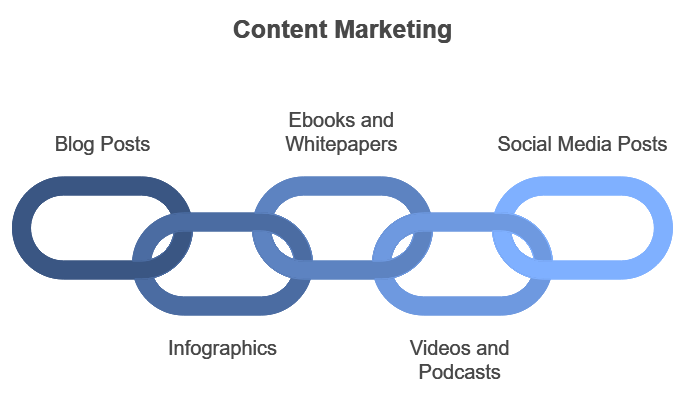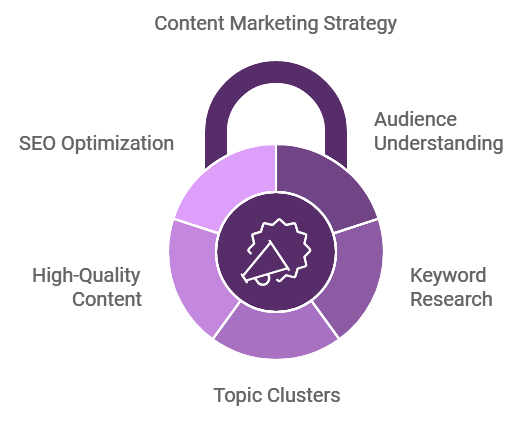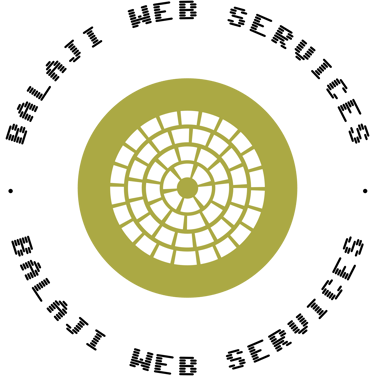Boost Online Visibility with SEO & Content Marketing
"Learn how to boost SEO with content marketing strategies using Google keyword tools. Discover tips for keyword research, ranking higher in search results, and attracting your target audience."
DIGITAL MARKETING
10/25/20245 min read


Content Marketing and SEO: How to Leverage Google’s Keyword Tools to Enhance Online Visibility
In the competitive world of digital marketing, content marketing and SEO are inseparable allies. Content marketing builds connections with audiences by offering useful information, while SEO ensures that this content reaches the right people through search engines. When combined, these strategies help drive traffic, improve visibility, and establish a brand as an industry authority. This guide explores the basics of content marketing, the role of search engine optimization, and how to use Google’s keyword tools effectively.
What Is Content Marketing?
Content marketing is a long-term strategy aimed at building a strong relationship with an audience by providing valuable, relevant content. It’s about solving real-world problems, educating readers, and helping people make informed decisions. This content can take many forms, including:
Blog posts that educate and inform
Infographics that simplify complex data
Ebooks and whitepapers offering in-depth knowledge
Videos and podcasts for engaging audio-visual learning
Social media posts to reach audiences directly where they spend time
Each piece of content serves a purpose, whether to raise awareness, educate, or convince potential customers to take action.
How Content Marketing Drives SEO Success
Content and SEO work best together. Without quality content, SEO strategies lack substance. Here’s why content marketing is crucial for SEO:
1. Keyword Relevance: Content allows you to strategically place keywords to attract your audience.
2. Authority Building: High-quality content earns backlinks from other reputable sites, which boosts your SEO ranking.
3. User Engagement: Well-crafted content encourages users to spend more time on your site, signaling search engines to rank your site higher.
4. User Intent Matching: Content optimized for user intent—whether informational, navigational, or transactional—aligns with what people are searching for, boosting search relevance.
To succeed in content marketing for SEO, it’s essential to understand how keywords play a role in visibility and traffic generation.
The Role of Keywords in Content Marketing
Keywords are specific words or phrases that users type into search engines to find content. Keywords fall into different categories:
Short-tail keywords: Simple, one-to-two word phrases like “content marketing” or “SEO tips.”
Long-tail keywords: More detailed, three-or-more word phrases like “how to use Google keyword tools for SEO.”
LSI (Latent Semantic Indexing) keywords: Related terms that add context, like “online marketing tools” when writing about SEO.
Keywords inform search engines about the topic of your content. When you incorporate relevant keywords naturally, you increase the chances of your content ranking for those terms. This is where Google’s keyword tools come into play.
Using Google’s Keyword Tools to Optimize Content for SEO
Google offers various keyword tools to help marketers uncover the right words to target. Let’s explore three key tools:
1. Google Keyword Planner
Google Keyword Planner is part of Google Ads, designed to help advertisers find keywords to target in paid campaigns. However, it’s also a great resource for SEO.
Finding New Keywords: Enter a keyword or URL, and Google will suggest relevant keywords.
Estimating Keyword Volume: The tool shows the average monthly search volume, which indicates the popularity of each keyword.
Evaluating Competition Level: See whether the competition is low, medium, or high, which helps you determine which keywords to target based on your content's competitiveness.
Example: Suppose you’re writing about “content marketing.” Using Google Keyword Planner, you might find relevant keywords like “content marketing strategy,” “benefits of content marketing,” or “content marketing examples.” Including these in your content naturally will help Google recognize your page’s relevance.
2. Google Trends
Google Trends is a powerful tool for tracking keyword popularity and understanding seasonal or regional trends.
Comparing Keywords: Google Trends allows you to compare keywords over time, helping you choose which terms to prioritize.
Identifying Regional Interest: Discover which locations have a high interest in certain keywords, useful for geo-targeted content.
Spotting Trending Topics: By observing rising topics, you can create timely content that attracts more searches.
Example: If you find that searches for “content marketing tips” are trending, it may be a good idea to produce a blog post that dives into practical tips for content marketers.
3. Google Search Console
While not strictly a keyword tool, Google Search Console provides insights into the keywords your website is already ranking for.
Reviewing Search Performance: Track clicks, impressions, and the average position of keywords.
Analyzing User Queries: Understand the terms people use to find your site and optimize existing content to improve visibility for those terms.
Improving Low-Ranking Keywords: Use this data to adjust content on pages that rank lower than desired for targeted keywords.
Example: If Google Search Console shows that your page on “content marketing strategy” is ranking on page two, you can refresh the content, add relevant keywords, or build backlinks to improve its position.
Building an Effective Content Marketing Strategy with SEO and Google’s Keyword Tools
Here’s how to create a strategy that merges content marketing with SEO, using keyword insights.
1. Define Audience and Intent:
Understand who your audience is and what they need. Consider their intent—do they want to learn, compare, or buy?
2. Conduct Keyword Research:
Use Google Keyword Planner, Google Trends, and Search Console to compile a list of relevant keywords, focusing on a mix of short-tail, long-tail, and LSI keywords. Long-tail keywords may have lower search volume but are often easier to rank for and have higher conversion rates.
3. Organize Keywords by Topic Cluster:
Group related keywords into topic clusters. Each cluster has a “pillar page” (main topic) and subtopics that support it. For example, a “Content Marketing” cluster could include “benefits of content marketing,” “content marketing strategy,” and “content creation tips.”
4. Create High-Quality, User-Centric Content:
Develop content that addresses user needs and questions. Use primary keywords in headings, subheadings, and throughout the content naturally, avoiding overuse (keyword stuffing).
5. Optimize Content for On-Page SEO:
Title Tags: Include the main keyword naturally in the title.
Meta Descriptions: Write a concise description with the primary keyword to improve click-through rates.
Headers and Subheaders: Use keywords in H1, H2, and H3 tags to organize content and improve readability.
Image Alt Text: Add descriptive keywords to image alt text for better SEO and accessibility.
6. Use Internal and External Links:
Link to related pages within your website (internal linking) and reputable external sites (external linking) to help Google understand the relevance and credibility of your content.
How to Measure Content Marketing and SEO Success
After creating and optimizing content, tracking performance is crucial to understand what’s working and what needs adjustment.
1. Organic Traffic: Use tools like Google Analytics to measure the increase in traffic from organic search. Higher organic traffic often indicates that your SEO efforts are working.
2. Keyword Rankings: Track keyword positions for targeted terms to see if they are improving over time. Tools like Ahrefs or SEMrush, in addition to Google Search Console, can help with this.
3. Engagement Metrics: Metrics like average time on page, bounce rate, and pages per session show whether users find your content engaging.
4. Conversions: Ultimately, the goal of content marketing is to drive conversions. Track actions such as downloads, sign-ups, and purchases to assess the effectiveness of your content.
The Future of Content Marketing and SEO: Embracing E-A-T and AI
Google places increasing importance on the E-A-T (Expertise, Authoritativeness, Trustworthiness) of content. To rank higher, prioritize creating content with accurate, well-researched information and consider author credentials.
AI and NLP (Natural Language Processing) will also shape the future of SEO. AI-driven content creation and optimization tools are becoming more prevalent, making it essential for marketers to stay up-to-date and embrace these tools in their strategies.
Content marketing and SEO, when used together, create a powerful synergy that enhances brand visibility, builds authority, and drives valuable traffic. By leveraging Google’s keyword tools, you can optimize content that aligns with user intent, stands out to search engines, and meets the evolving expectations of online audiences.




Contact
contact@baos.in
© www.baos.in 2024. All rights reserved.
Quick Links
Call : 09629451110
